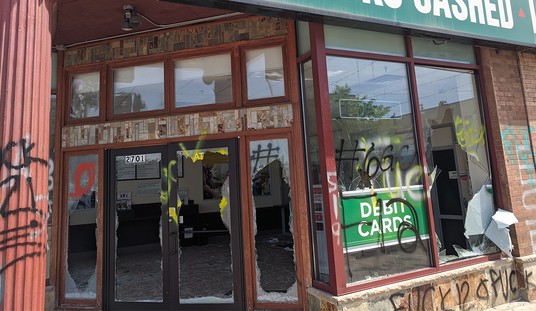The collapsing world economy has driven the price of oil into negative territory for the first time in history. Crude oil futures for May plunged below $0 for the second day on Tuesday, after they closed at a negative $37.63. In practical terms, that means that “anybody who is supposed to receive a shipment of American crude but doesn’t want it will have to pay somebody else to take it.”
A better gauge of how investors feel about the oil market is in the price of June oil futures, and that fell to $14.30 bbl, down 30 percent while July futures were holding at $23.42, slipping just 11 percent.
The reason why is not complicated. Everyone around the industrialized world is driving less. But oil production was as record levels as Saudi Arabia and Russia each flooded the market with millions of barrels of oil. Coupled with the business closings, there simply isn’t anywhere else to put the stuff.
The historic low price reflects uncertainty about what buyers would even do with a barrel of crude in the near term. Refineries, storage facilities, pipelines and even ocean tankers have filled up rapidly since billions of people around the world began sheltering in place to slow the spread of the deadly coronavirus.
While trading in summer oil futures is slightly better, it’s still far below what’s required to save hundreds of thousands of jobs in the energy sector.
“We expect extremely weak fundamentals to persist for at least the next month,” Deutsche Bank analyst Michael Hsueh wrote in a note to clients Monday. “Continued pressure on infrastructure may result in negative pricing at some point again before the end of May, on the current trajectory,” he added.
The coronavirus pandemic has led to unprecedented demand loss. The International Energy Agency warned in its closely-watched monthly oil report that demand in April could be 29 million barrels per day lower than a year ago, hitting a level last seen in 1995. And with places to store the crude quickly filling, some argue that prices could stay lower for longer.
“Even as OPEC++ oil production cuts are set to kick in May 1, and supply and inventories should tighten significantly in 2H′20, the next 4-6 weeks are seeing severe storage distress, likely to drive wild price realizations and unusual disconnects, including supercontango and negative prices,” Citi analysts led by Eric Lee wrote in a note to clients Monday.
“Supercontango” is when prices are higher in the future than in the present. One analyst called the spread between May and June contracts “insane.”
Large, diversified oil companies can outlast just about any downturn but smaller producers are in for a very rough ride. An increase in demand for oil awaits a clearing of inventories that are sky high right now. Hopefully, by the end of the summer, some kind of normalcy will return to the oil market, and like every other sector in the economy, it will begin to climb out of the hole this virus has dug for it.
Editor’s Note: Want to support PJ Media so we can keep telling the truth about China and the virus they unleashed on the world? Join PJ Media VIP and use the promo code WUHAN to get 25% off your VIP membership.










Join the conversation as a VIP Member